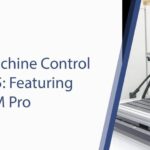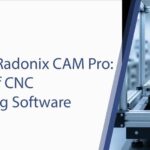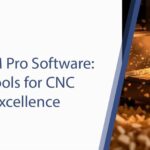Choosing the Right CNC Controller: A Complete Buyer’s Guide
Selecting the right CNC controller is one of the most critical decisions manufacturers face. The chosen controller determines machining precision, speed, flexibility, and long-term productivity.
With numerous models and technologies on the market, understanding the key selection factors helps ensure that your CNC setup meets both current and future production goals.
This comprehensive guide highlights the main controller types, performance metrics, and integration considerations to help manufacturers make the right choice.
1. Understanding the Types of CNC Controllers
Before selecting a CNC controller, it’s essential to understand the primary categories available and how they fit different manufacturing needs:
- Standalone Controllers: Compact and cost-effective, ideal for small to mid-sized operations such as woodworking, laser cutting, and routing. They use embedded processors and require minimal external hardware.
- PC-Based Controllers: Offer greater processing power, multi-axis support, and CAD/CAM software integration. Perfect for industries requiring precision machining and flexibility.
- PLC-Integrated & Modular Controllers: Designed for smart factories, these systems feature scalable architectures and full compatibility with Industry 4.0 technologies. They support complex automation, big data analysis, and IoT-based connectivity.
Choosing the right controller depends on your production volume, complexity, and integration requirements.
2. Compatibility and Seamless Integration
Effective communication between machines and software is vital for uninterrupted production. Ensure your CNC controller supports essential industrial communication protocols such as Ethernet/IP, Modbus TCP, Profinet, and CANopen. Compatibility with existing CAD/CAM and ERP systems ensures smooth data flow, reduces installation time, and minimizes workflow disruptions.
Tip: When upgrading, verify backward compatibility to avoid replacing existing servo drives or I/O modules.
3. Precision, Speed, and Performance
A high-performance controller directly influences output quality. Look for:
- High-precision motion control with microsecond-level feedback loops.
- Multi-axis synchronization for smooth and complex toolpath execution.
- Stable performance even under heavy workloads.
Modern systems such as FANUC 31i-B or Siemens Sinumerik 840D sl exemplify advanced real-time control and dynamic feed optimization.
4. Intuitive Programming and User Interface
User experience is crucial for efficient programming. Controllers featuring intuitive UIs, touchscreen interfaces, and real-time toolpath visualization significantly reduce operator errors and learning time. Systems with built-in simulation allow operators to verify programs before execution, improving both confidence and productivity.
Example: Radonix Smart 4A control panels combine PC-based architecture with user-friendly software interfaces, making them ideal for medium-scale production lines.
5. Scalability, Expansion, and Upgrades
Choose a system that grows with your business. Scalable controllers should support:
- Additional axes or robotic integration.
- Future firmware updates.
- Modular expansions, such as extra I/O ports or drive modules.
Investing in an expandable system prevents early obsolescence and maximizes long-term ROI.
6. Support, Maintenance, and Reliability
Dependable technical support and readily available spare parts are crucial for minimizing downtime. Prioritize brands offering:
- 24/7 technical assistance.
- Regular software updates.
- Strong local distributor or partner networks.
Radonix, Siemens, and Heidenhain are examples of brands with established global support infrastructures.
7. Budget vs. Value: Making the Right Investment
Avoid focusing solely on the lowest price. Instead, evaluate value-to-performance ratio—the balance between precision, reliability, and cost. Entry-level standalone units may be suitable for small workshops, while advanced modular systems justify higher costs in large-scale production environments.
8. Real-World Feedback and Industry Insights
Before finalizing a purchase, consult peer reviews, case studies, and industry forums. Insights from similar manufacturers reveal practical strengths and weaknesses beyond technical specifications.
9. Industry-Specific Requirements
Each industry has unique compliance standards and machining needs:
- Aerospace: Demands ultra-precision and certification compliance.
- Automotive: Requires multi-axis flexibility and repeatability.
- Medical: Needs micro-machining precision and validated control systems.
Ensure the chosen controller aligns with your sector’s requirements.

Conclusion: Investing in Long-Term Efficiency
Choosing the right CNC controller isn’t just a technical decision—it’s a strategic investment that shapes the future of your production. By considering performance, compatibility, scalability, and support, manufacturers can achieve higher precision, better efficiency, and lower total ownership costs.
Radonix delivers high-performance, cost-effective CNC control systems designed to meet modern industry standards while ensuring flexibility and reliability. Selecting the right Radonix solution means optimizing every stage of your machining process.








